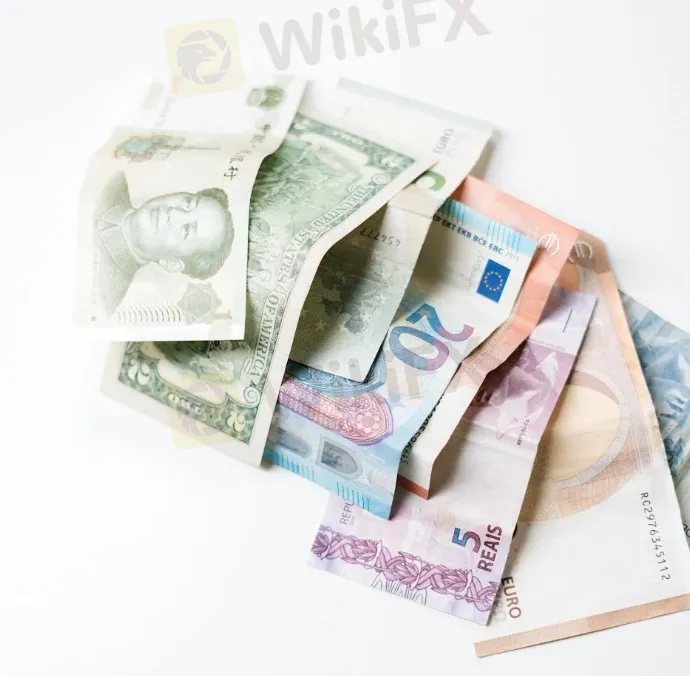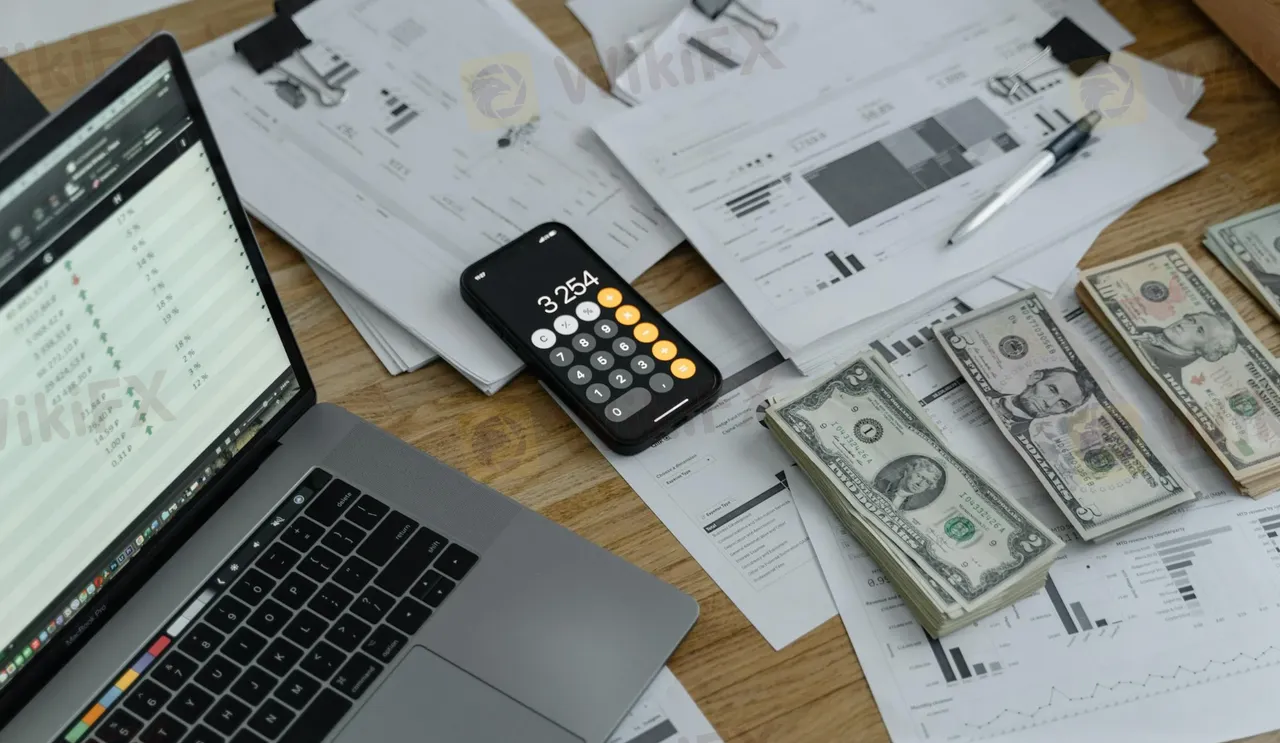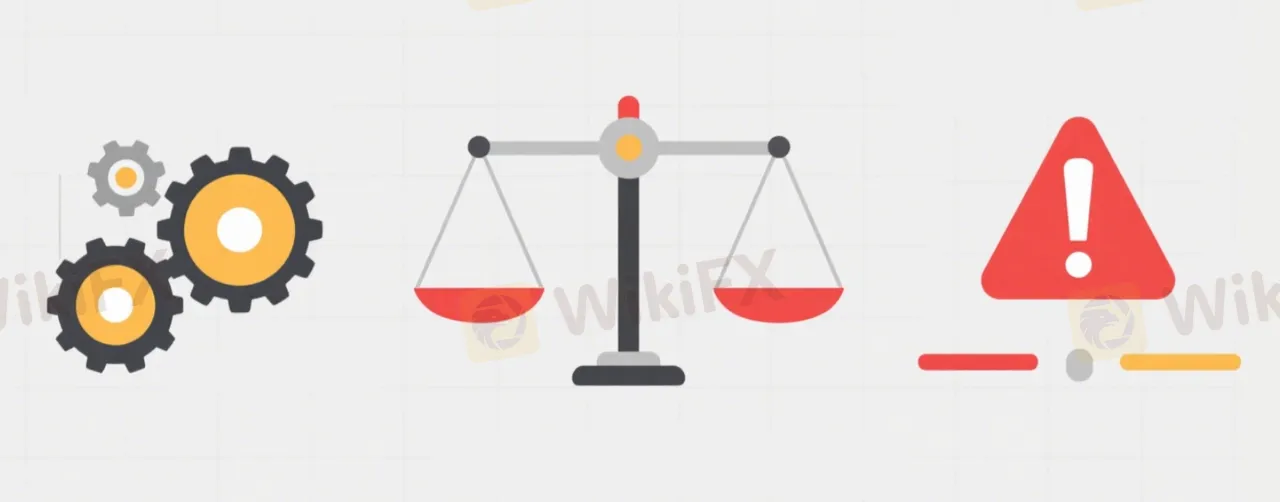简体中文
繁體中文
English
Pусский
日本語
ภาษาไทย
Tiếng Việt
Bahasa Indonesia
Español
हिन्दी
Filippiiniläinen
Français
Deutsch
Português
Türkçe
한국어
العربية
Forex Trading for Beginners: A Complete Guide to How It Works
Abstract:This guide will give you that knowledge. We'll cover everything from basic definitions to live trade mechanics. You'll understand exactly what is trade in forex and how you can get started.
Your First Step
Have you ever traveled to another country and exchanged your home currency for the local one? If so, you've already participated in the foreign exchange market.

Forex trading is essentially doing this on a massive, speculative scale. You aim to profit from the constantly shifting values of the world's currencies. It's that simple at its core.
This is the largest and most liquid financial market on the planet. It's a world of opportunity. But it requires knowledge to navigate successfully.
This guide will give you that knowledge. We'll cover everything from basic definitions to live trade mechanics. You'll understand exactly what is trade in forex and how you can get started.
Forex Trading Simply Explained
Let's establish a clear forex trading definition. It's buying one currency while simultaneously selling another. You're speculating that the currency you buy will increase in value relative to the one you sell.
The core concept is a bet on relative strength. If you believe the Euro will strengthen against the U.S. Dollar, you buy Euros and sell Dollars. Your profit or loss depends on how much that exchange rate moves. This is the essence of what a forex trade is.
Forex Market Fundamentals
To truly understand trading, you must first understand the market itself. The term “forex” is short for foreign exchange.
Unlike a stock market with a central location like the New York Stock Exchange, the forex market is decentralized. It's an over-the-counter (OTC) market. This means it operates through a global network of banks, corporations, and individuals, rather than a single physical exchange.
This network connects major financial centers like London, New York, Tokyo, and Sydney. Trading happens 24 hours a day, five days a week.
Forex vs. Forex Trading
It's helpful to distinguish between two related concepts. This is the key to understanding what is forex and forex trading.
“Forex” refers to the entire global marketplace. It's the vast network where currencies are exchanged for commerce, tourism, and government operations.
“Forex trading,” on the other hand, is the specific activity of speculating on price movements within that market. It's almost always done for profit.
The sheer scale of this market is immense. According to the 2022 Triennial Central Bank Survey from the Bank for International Settlements (BIS), the forex market trades around $7.5 trillion per day. This incredible liquidity means you can almost always find a buyer or seller instantly.
Who Trades Forex?
The market is a diverse ecosystem with several key participants. Each has different motivations.
- Large Banks (The Interbank Market): These form the very core of the forex market. They conduct massive trades for themselves and their clients. They set the exchange rates that trickle down to the rest of the market.
- Governments and Central Banks: These institutions trade forex to manage their country's currency reserves. They influence the value of their own currency for economic reasons and execute monetary policy.
- Corporations: Multinational companies participate to conduct business. An American company buying supplies from Germany needs to exchange dollars for euros. They also trade to hedge, or protect themselves, against losses from unfavorable currency fluctuations.
- Retail Traders (Like You): This category includes individuals who speculate on currency movements through online brokers. As a retail trader, you aim to profit from the same price changes that these larger players navigate.
Why People Trade Forex
The motivations for trading forex can be boiled down to two primary goals.
First is speculation. This is the main driver for retail traders. You analyze the market and predict whether a currency's value will rise or fall against another. Then you open a position to capitalize on that movement.
Second is hedging. While less common for individuals, businesses use forex as insurance. If a company knows it has to make a large payment in a foreign currency in three months, it can lock in an exchange rate today. This avoids the risk of the currency becoming more expensive later.
How a Forex Trade Works
Now we move from the “what” and “why” to the “how.” Understanding trade mechanics is essential before you ever click a button on a trading platform. This section breaks down the core components.
These concepts—currency pairs, quotes, pips, and leverage—are the language of forex trading.
Understanding Currency Pairs
In forex, you never just buy “the U.S. Dollar.” Currencies are always traded in pairs. This is because you're simultaneously buying one and selling another.
The first currency listed in a pair is the base currency. The second is the quote currency.
Think of it like a price tag in a store. For the pair EUR/USD, the Euro (EUR) is the product you're buying or selling. The U.S. Dollar (USD) is the price you pay for it.

If the EUR/USD price is 1.0800, it means one Euro costs 1.0800 U.S. Dollars.
Currency pairs are grouped into three main categories. They're based on their liquidity and trading volume.
| Category | Description | Examples |
| Major Pairs | Involve the USD and are the most traded and liquid. | EUR/USD, USD/JPY, GBP/USD |
| Minor Pairs | Cross-currency pairs that do not involve the USD. | EUR/GBP, EUR/JPY, AUD/CAD |
| Exotic Pairs | A major currency paired with one from an emerging economy. | USD/MXN, EUR/TRY, JPY/NOK |
Reading a Forex Quote
When you look at a currency pair on a trading platform, you'll see two prices, not one. These are the bid and ask prices.
The bid price is the price at which your broker is willing to buy the base currency from you. This is the price you get when you sell.
The ask price is the price at which your broker will sell the base currency to you. This is the price you pay when you buy.
The difference between these two prices is called the spread. The spread is the broker's primary cost for facilitating the trade. For you, a smaller spread is always better. It means a lower transaction cost.
Pips, Lots, and Profit
To measure profit and loss, traders use specific units: pips and lots.
A pip stands for “Percentage in Point.” It's the smallest standard unit of price movement in a currency pair. For most pairs, it's the fourth decimal place. For example, if EUR/USD moves from 1.0850 to 1.0851, it has moved one pip.
A lot refers to the size of your trade. The size of your lot determines the monetary value of each pip movement.
- Standard Lot: 100,000 units of the base currency.
- Mini Lot: 10,000 units of the base currency.
- Micro Lot: 1,000 units of the base currency.
For a mini lot (10,000 units) of EUR/USD, one pip of movement is worth approximately $1. For a standard lot, one pip is worth about $10. Your profit or loss is simply the number of pips the price moved in your favor multiplied by the pip value of your lot size.
Understanding Leverage
Leverage is a concept that truly defines what is trading forex for many retail participants. It allows you to control a large position in the market with a relatively small amount of your own capital.
Leverage is essentially a loan provided by your broker. It's expressed as a ratio, such as 50:1, 100:1, or even higher.

With 100:1 leverage, you can control a $100,000 position (one standard lot) with just $1,000 of your own money. That $1,000 is called your margin.
This tool is a double-edged sword. Leverage magnifies your potential profits significantly. However, it's crucial to understand that it magnifies your potential losses in exactly the same way. High leverage can lead to rapid and substantial losses if the market moves against you.
A Practical Trade Example
Theory is one thing. But seeing how these concepts come together in a practical example makes it all click. This is how to understand what is trade in forex in a real-world scenario.
Let's follow a fictional trader, Alex, as he plan and execute a single trade from start to finish.
Step 1: Forming a Hypothesis
Alex's trading day starts with analysis, not clicking buttons. This is the “why” behind the trade.
Alex reviews economic news. He notices that recent manufacturing data from the Eurozone has been surprisingly strong. At the same time, retail sales figures from the United States have come in weaker than expected.
Based on this information, Alex forms a hypothesis. The Euro (EUR) is likely to strengthen against the U.S. Dollar (USD) in the short term.
Step 2: Placing the Trade
With a clear hypothesis, Alex decides to act. The goal is to “go long” on EUR/USD. This means buying the pair.
Alex opens their trading platform and sees the current quote for EUR/USD is 1.0850 / 1.0852. The bid price is 1.0850, and the ask price is 1.0852.
To buy the pair, Alex must pay the ask price. He decides to trade one mini lot (10,000 units) and executes a buy order at 1.0852.
The total value of this position is 10,000 Euros. Assuming Alex's account has 100:1 leverage, the margin required to open this trade is approximately $108.52 (1.0852 * 10,000 / 100).
Step 3: Managing the Trade
Professional traders never enter a trade without a plan for both profit and loss. Alex immediately sets up two crucial orders to manage the position.
First, a stop-loss order is placed at 1.0822. This is an automatic instruction to close the trade if the price falls by 30 pips. This order protects Alex from a large loss if their hypothesis is wrong. It caps the maximum risk at around $30 (30 pips x ~$1/pip).
Second, a take-profit order is placed at 1.0912. This is an automatic instruction to close the trade if the price rises by 60 pips, which locks in the profit if the trade goes as planned.
Step 4: Closing the Trade
With the trade active and safety nets in place, one of two scenarios will play out.
Scenario A (Profit): The market moves in Alex's favor. The EUR/USD price climbs and eventually hits 1.0912. The take-profit order is triggered, and the trade is closed automatically. The profit is the difference between the closing price (1.0912) and the opening price (1.0852), which is 60 pips. For a mini lot, this results in a profit of approximately $60.
Scenario B (Loss): The market turns against Alex's position. The EUR/USD price falls and hits 1.0822. The stop-loss order is triggered, and the trade is closed automatically. The loss is the difference between the opening price (1.0852) and the closing price (1.0822), which is 30 pips. This results in a loss of approximately $30.
This complete cycle—from hypothesis to outcome—is a perfect illustration of what a forex trade involves.
Finding Your Trading Style
There is no single “correct” way to trade forex. Your personality, the amount of time you can dedicate, and your psychological tolerance for risk will determine which style is the best fit for you.
Understanding these different approaches is a key step in developing your personal trading plan.
Which Trader Are You?
We can broadly categorize trading styles into four types. They're primarily distinguished by the length of time trades are held.
These are scalping, day trading, swing trading, and position trading. Each has unique demands and suits a different kind of individual.
This table provides a direct comparison to help you identify which style might align with your own characteristics.
| Trading Style | Timeframe | Holding Period | Time Commitment | Psychological Profile |
| Scalping | 1-min to 5-min charts | Seconds to Minutes | Very High | Highly disciplined, decisive, can handle high stress. |
| Day Trading | 15-min to 1-hour charts | Minutes to Hours | High (Daily) | Focused, patient, can make quick decisions all day. |
| Swing Trading | 4-hour to Daily charts | Days to Weeks | Medium | Patient, can handle overnight risk, less emotional. |
| Position Trading | Daily to Weekly charts | Weeks to Months/Years | Low | Very patient, long-term thinker, macro-focused. |
Understanding and Managing Risk
Any honest discussion about forex trading must include a serious focus on risk. The potential for profit is always accompanied by the potential for loss. Being aware of the dangers is the first step toward protecting your capital.
This is not meant to discourage you. It's meant to empower you with the knowledge to trade responsibly.
Key Trading Risks
While there are many variables, three primary risks stand out for every new trader.
1. Leverage Risk: We've mentioned it before, but it bears repeating. Leverage is the number one reason why new traders lose money. It magnifies losses just as powerfully as it magnifies gains.
2. Market Volatility: The forex market can be extremely volatile. News events, economic data releases, or political instability can cause prices to move very quickly and unpredictably. Sometimes this happens against your position.
3. Interest Rate Risk: Central bank decisions on interest rates are a huge driver of currency value. An unexpected rate hike or cut can cause massive swings in the market. This can catch unprepared traders by surprise.
Basic Risk Management
Smart trading is safe trading. Fortunately, there are fundamental rules and tools you can use to manage your risk from day one.
- Start with a Demo Account: This is the most important first step. Before risking any real money, trade on a demo account with virtual funds. It allows you to practice your strategy and learn the platform in a risk-free environment.
- The 1% Rule: A widely respected rule of thumb is to never risk more than 1% of your total trading capital on any single trade. If you have a $2,000 account, your maximum loss on one trade should be no more than $20.
- Always Use a Stop-Loss: As seen in our trade example, a stop-loss order is your non-negotiable safety net. It automatically closes a losing trade at a predetermined level. This prevents catastrophic losses.
- Develop a Trading Plan: Never trade based on emotion or a “hunch.” A trading plan defines your strategy, risk management rules, and criteria for entering and exiting trades. Stick to it.
Your Journey Begins Now
You have taken a significant first step. You've gone from asking “what is forex trading?” to understanding the market's structure, the mechanics of a trade, and the critical importance of managing risk.
This knowledge is the foundation upon which all successful trading careers are built. You now have a clear map of the landscape.
Key Takeaways
Let's quickly recap the most crucial points from this guide.
- Forex trading is the act of speculating on the changing values of currencies against each other.
- It operates in a massive, decentralized global market that trades over $7.5 trillion per day.
- Understanding the language of pairs, pips, lots, and spreads is essential for placing a trade.
- Leverage is a powerful tool that can amplify both profits and losses. It must be treated with respect.
- Risk management is not an optional extra. It's the most critical component for long-term survival and success in trading.
Disclaimer:
The views in this article only represent the author's personal views, and do not constitute investment advice on this platform. This platform does not guarantee the accuracy, completeness and timeliness of the information in the article, and will not be liable for any loss caused by the use of or reliance on the information in the article.
WikiFX Broker
Latest News
The "Arbitrage" Accusation: How Winning Trades Turn Into Account Reviews at ACY Securities
IC Markets Formula 1 Partnership Debuts at Abu Dhabi GP 2025
The TikTok Scam That Cost a Retiree Nearly RM470,000
QuickTrade Review: Multiple Reports of Account Freezes and Login Failures by Users
Is Tauro Markets Safe? A 2025 Deep Look into Its Risks and Openness
CommSec Regulation, Login Information & User Review : A Comprehensive Review
Trading Knowledge is Wealth! Take the Daily Quiz Challenge and Win 1,000 Points!
FCA Waning list of Unauthorised firms
OneRoyal Review 2025: Multiple Licenses Yet Flooded with Scam Complaints
Inside the BSN Scandal: Bank Officer Stole Over RM11 Million from Victims
Currency Calculator



